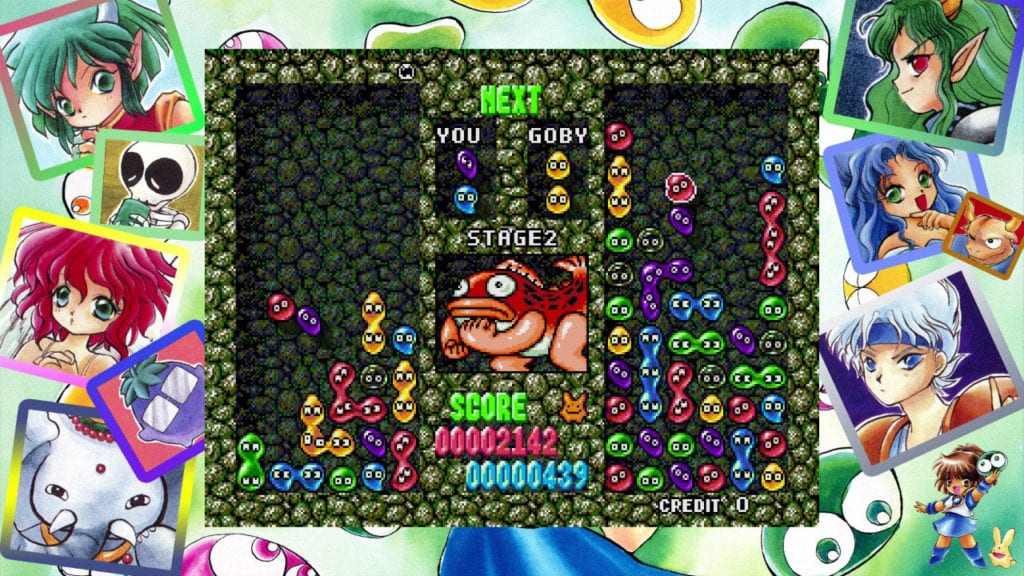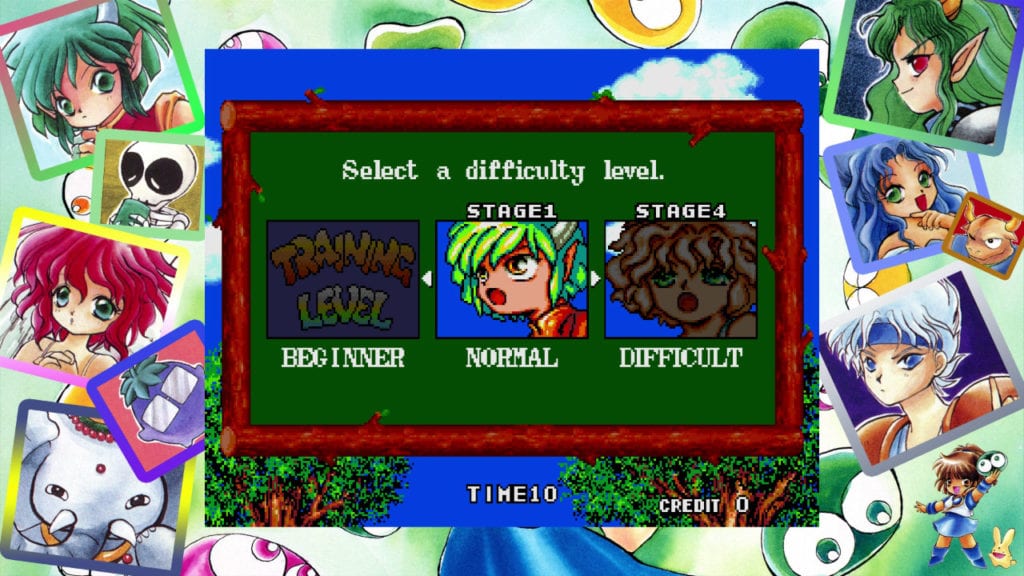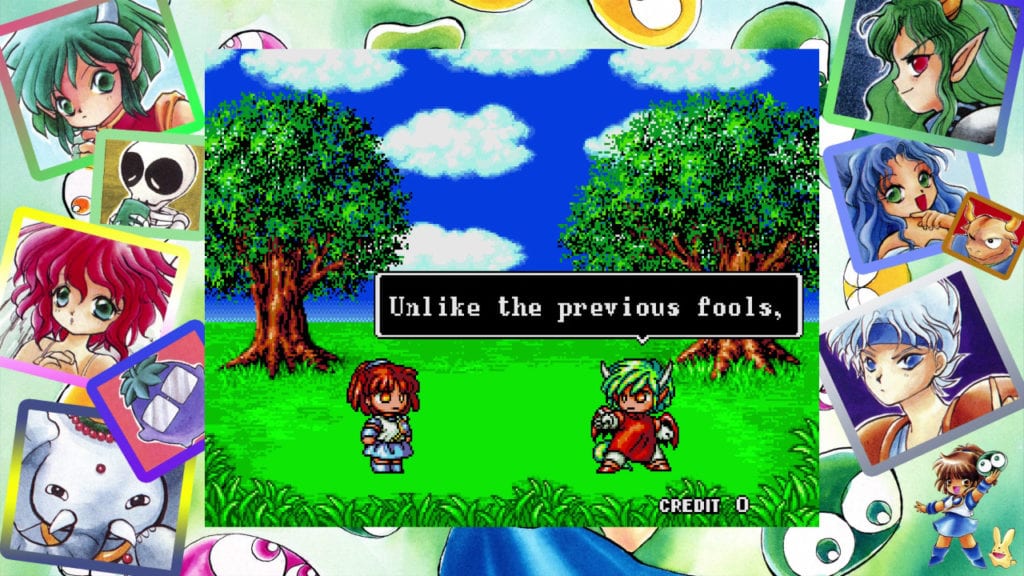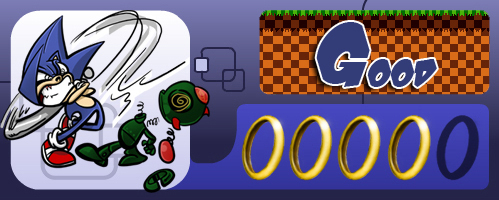VERDICT
GOOD
GOOD
Despite being a port of one of the earliest releases in the series, I don't know if it's a very good place for novices and newbies to try their luck; as noted before, this game is tough, and M2 doesn't do much to facilitate getting a grasp on it -- it's either sink or swim here.
In 1993, SEGA brought a peculiar release to the Genesis. Titled “Dr. Robotnik’s Mean Bean Machine,” it was a puzzle game featuring Sonic the Hedgehog’s eternal nemesis in the title role, but broke from the norm of every Sonic title before it.
Rather than an action platformer, it was was instead a puzzle game featuring not only the version of the eponymous villain from DiC’s Adventures of Sonic the Hedgehog syndicated cartoon series, as well as some other robotic faces both familiar to those who watched the show and others less so.
Fans ate it up like a bowl full of rice and, well, beans. This led to a subsequent release on the Game Gear, and the title would go on to be featured in various collections and the like, even garnering a place as a boss battle in Sonic Mania with the original version of its namesake villain.
Unbeknownst to most at the time, however, Dr. Robotnik’s Mean Bean Machine wasn’t the game’s original form. Fearing that the original characters might not appeal to a western audience, SEGA opted to heavily localize a Japanese puzzle game from a developer known as Compile, Puyo Puyo. Incidentally, Nintendo would pull a similar trick in 1995 with one of their popular characters, resulting in Kirby’s Avalanche for the Super Nintendo Entertainment System (SNES for you acronym-lovers).
What the SEGA Ages series has brought to the Nintendo Switch, however, is not Dr. Robotnik’s Mean Bean Machine, nor even the Japanese Mega Drive game which begat it. Instead, developer M2 has gone back even further, bringing us a port of the first arcade game in the series.

Gameplay
The gameplay is simple enough: Groups of gelatinous creatures known as Puyo fall in pairs from the top of the screen, and players must organize them so that four or more Puyo of matching colors connect, thus eliminating them from the board. This would be challenging enough by itself, but that’s not all. As the 16-year old female spellcaster Arle Nadja, you’re out to foil the plans of the Dark Prince (his friends call him “Satan”), and along the way, you encounter a variety of characters who are also trained in the Puyo arts.
(Despite having a story, none of this is explained in the game, by the way. Ah, for the days when you had to read auxiliary materials to get the full scoop…)
This means that even when playing alone, every match is a versus match, and this ups the stakes significantly. Chaining together multiple eliminations of Puyos will build up a pile of “junk” or “enemy” Puyo that will drop on your opponent’s screen, getting in the way of your perfectly-placed Puyo piles. What’s more, they’ll do the same to you, meaning that it’s not just enough to merely survive, but you’ve got to master chain combos — easier said than done, and the demo makes it look so much easier still.
Let me tell you, if you’re not well-versed in the art of plopping Puyos, then this game gets really hard, really quick. Even with every advantage the game could give me, the second stage of the beginner section still slaughtered me handily. You have to be aggressive, and you have to be fast, or else you’ll be buried six feet under in no time.

Features
For its part, the resulting Switch release is fairly basic and bare bones, especially when compared to some of M2’s ports of other games. You’ve got your basic Arcade Mode, which can be played with either one or two players. You can also toggle on a Helper feature, which in certain stages will reduce the number of Puyo colors you have to deal with, as well as their drop speed.
Alternatively, provided you have a subscription to Nintendo Switch Online, you could go online to face the finest Puyo Puyo competition the world has to offer by starting or joining a room, or even just looking for a random opponent. At least, in theory; I attempted several times to find a match online, waiting minutes at a time, all to no avail.
Mind, this probably has something (if not everything) to do with the fact I’m playing the game pre-release, so don’t take this as an indictment of the feature. After all, this is just Puyo Puyo, a game that’s over a quarter-century old running on modern hardware — it probably works just fine.
Other flourishes include game saving/loading, a new ranking system, a music player, and the ability to basically record and play back a particularly good run. There are four difficulty levels to choose from, ranging from (relatively) “Easy” to “Hardest,” and you can choose how many battles are needed to successfully conquer an opponent, and even set “Rotate Left & Quick Turn” on or off as you like (I have no idea what either of those last two actually do. Please consult your local Puyo Puyo expert before applying).
The usual array of display modes are all here, too, ranging from regular to widescreen, fullscreen, and more. You can further augment that with a scan line filter, smoothing for that blurry “what’s an HDTV?” ’90’s feel, a combination of the two, or just throw all that out altogether and enjoy the original pixels as they were designed. There’s also wallpaper, for the screen settings that support it, including one featuring several of the characters surrounding the screen, looking like they just jumped out of a Clamp manga.
Perhaps of greatest significance is that this release features not one, but two versions of the game: Japanese and International. Siliconera doesn’t know if the international version was ever actually released, you know, internationally, but it was made and it is included here, with some name changes and altered character art.
Oh, and the story is now legible to people who can’t read Japanese, but can read English. You know, if you’re into that (I found Puyo Puyo Tetris’s story to be a bit more engaging, honestly).

Summary
All in all, it’s a nice and compact little package. Despite being a port of one of the earliest releases in the series, I don’t know if it’s a very good place for novices and newbies to try their luck; as noted before, this game is tough, and M2 doesn’t do much to facilitate getting a grasp on it — it’s either sink or swim here. But if you’ve got a good handle on how best to make Puyos plummet and would like to see how it all began (sort of — there was an MSX and Famicom version released prior to this), then you should do fine with this classic.
Incidentally, if for some reason you’re more interested in the Genesis version of the game, or simply prefer its westernized Eggman-flavored counterpart, both will be available on the SEGA Genesis Mini console coming out Sept. 19, 2019. That is, Dr. Robotnik’s Mean Bean Machine is included in the 42 games featured, but a quick switch of the language to Japanese will let you see Puyo Puyo instead, box art and all!
Pros:
- Nice graphics and sound
- Has multiplayer and online functionality
- Contains both Japanese and International versions
- M2 doing what M2 does
- Challenging
- Ranking system
Cons:
- Maybe too challenging?
- As such, not very beginner friendly
- No snooPINGASusual …


